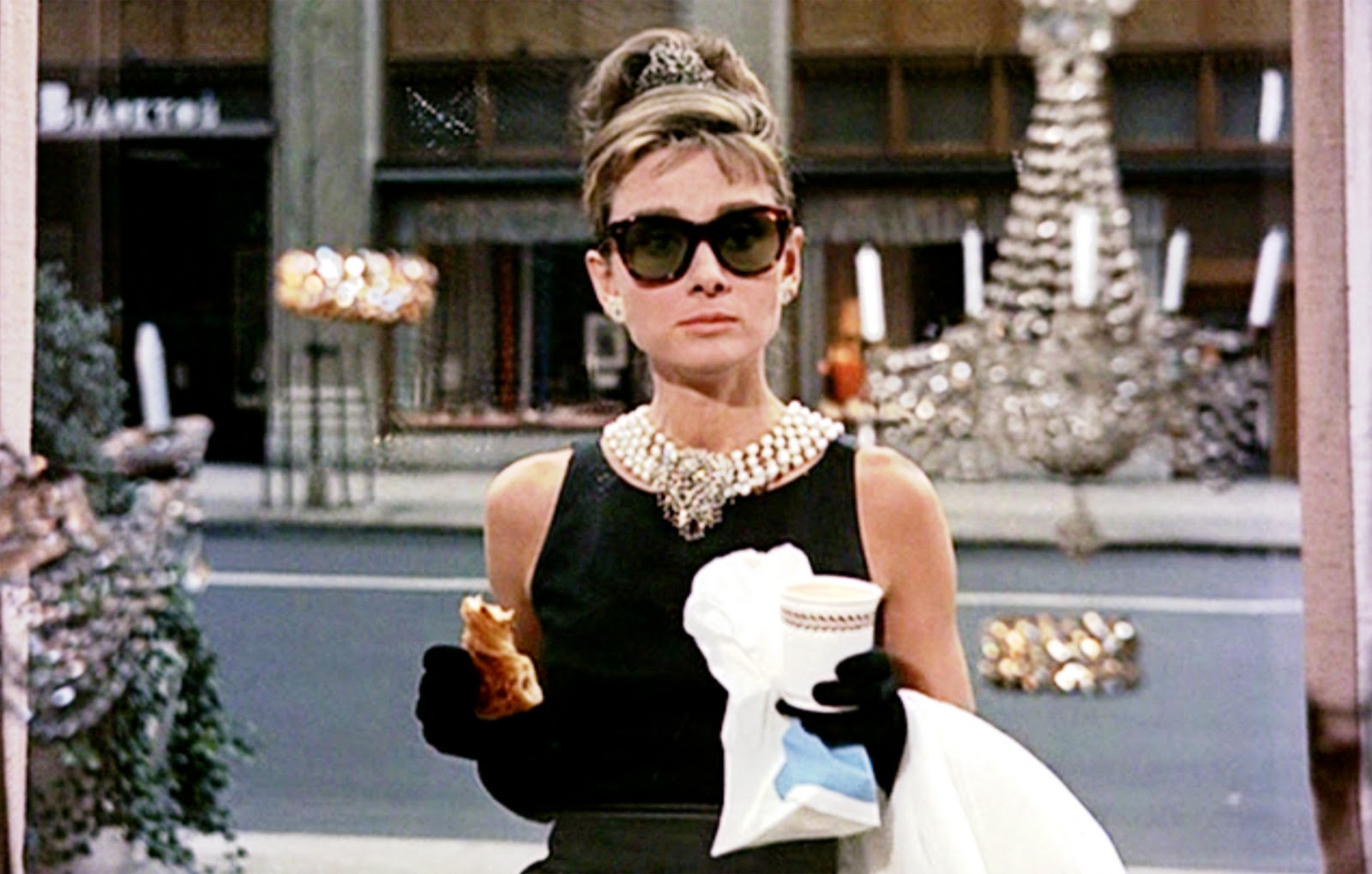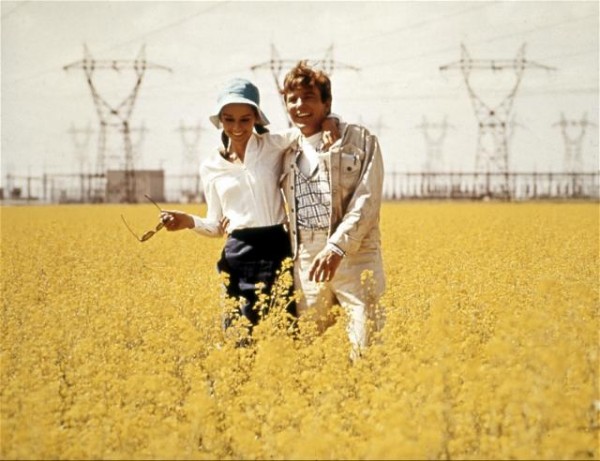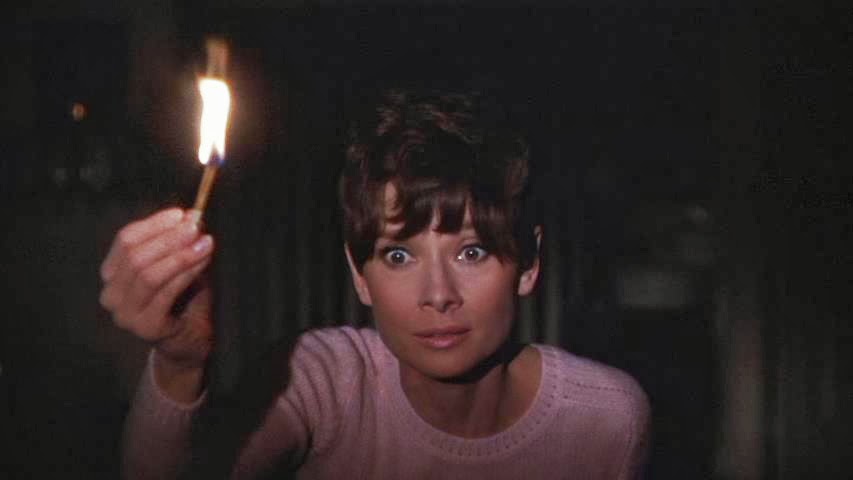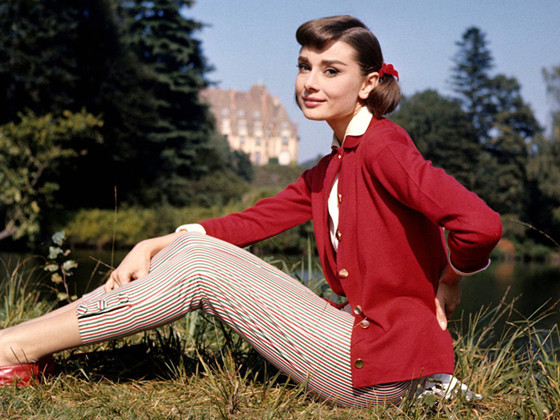Audrey Hepburn was born Audrey Kathleen Ruston in Brussels in 1929. The daughter of a Dutch Baroness and a one-time honorary British consul in the Dutch East Indies, she spent her early life in Belgium, England and the Netherlands, where she lived in Arnhem under German occupation during World War II. After the war she returned to London and continued studying ballet, as she had previously done in the Netherlands, and later started a career as a model.
Whilst modelling, she was spotted by a film producer and from 1948 to 1952 she had various small roles in a variety of European films. Not getting ahead much with her acting career, Audrey decided to try her luck in the United States, where she struck gold instantaneously when she was cast as one of the two leads in Roman Holiday, opposite Gregory Peck. The film was a great success and Hepburn was awarded the Oscar for Best Actress in her first Hollywood film, paving the way for a highly successful career.
Hepburn was the opposite type of female beauty that dominated at the time in Hollywood, as Marilyn Monroe had just become the next big thing. As opposed to the sex symbol/bombshell image of the curvaceous Monroe, Hepburn represented a slender almost elfin-like elegance, known for her grace, style and innocent looks.
These qualities would define most of the roles in her career, as Hepburn became a fashion icon and silver screen legend. She would dominate most of the fifties and sixties until she decided to call it quits whilst she was still on top after 1967’s Wait Until Dark. Although she would return to the screen occasionally (five times over the next 22 years, including a TV movie), Hepburn dedicated the last quarter of a century to her family whilst also becoming a prominent special ambassador for UNICEF, a position she held until her passing in 1993.
10. Breakfast at Tiffany’s (Blake Edwards 1961)
There was no way that Breakfast at Tiffany’s was not going to be included on this list. It’s one of Audrey Hepburn’s most iconic roles (if not the most iconic role) and photos of her character Holly Golightly have made their way to posters, handbags and t-shirts all over the world. The role is synonymous with Hepburn and she is stunning as ever.
But quite frankly, Breakfast at Tiffany’s is far from a good movie. Sure, Hepburn is as cute and charming as ever, but that really is the only reason this movie stands out. And it’s not just Mickey Rooney’s utterly offensive portrayal of Holly’s neighbour, the Japanese Mr. Yunioshi. Wearing make-up and a buck-toothed mouthpiece, Rooney portrays Mr. Yunioshi as a pretty despicable caricature and the character has rightfully come under fire in modern times.
The film itself is pretty much unremarkable light fluff in every way, directed by Blake Edwards, who more often relied on his stars rather than dis directorial skills to make his movies. If Hepburn’s central performance is taken out of the equation here, there really isn’t much that could be considered praiseworthy left.
That being said, Hepburn absolutely rules the screen in Breakfast at Tiffany’s and her casting is pitch perfect. Whilst Truman Capote, author of the novella the film is based, was not satisfied with her casting and whilst the filmmaker’s take on the character differs great from the one described in the book, it is undeniable that Hepburn owns the role of Holly Golightly from the moment she first appears on screen and it is hard to image that any other actress would have been able to play the part as well as she did.
A clear case of a performance elevating an otherwise very mediocre film way higher than it ever would have been without it. Hepburn rightfully received her fourth Best Actress Academy Award nomination for her role in the film.
9. The Nun’s Story (Fred Zinneman 1959)
Based on the novel of the same title by Kathryn Hulme, The Nun’s Story shied away from some of the harsh and controversial material presented in the book but still managed to tuen out a rather daring film at the time of its release. Directed by Hollywood great Fred Zinneman, Audrey Hepburn gives one of her career’s finest performances here and was nominated for her third Best Actress Academy Award as a result.
The film tells the story of Gabrielle Van Der Mal (Hepburn), the daughter of a prominent surgeon, who decides to give up her upper class life to join a convent, in the hopes of becoming a missionary nursing sister in the Belgian Congo. She assumes the name Sister Luke after taking her vows, which she struggles with from the very start. After an initial difficult time serving in a Belgian mental institution, she does eventually get sent to the Congo as she had hoped for. Unfortunately for Sister Luke, it turns out she has not been deployed there to care for the natives but is placed in the white European section of the hospital instead.
There she gets to work with the atheist and brilliant surgeon Dr. Fortunati (Peter Finch), who manages to heal her after she contracts tuberculosis as a result to her hard work and the stress caused by her inner turmoil over her vows of obedience as a nun. After a few years she is sent back to Belgium and is placed in a local hospital, but the German invasion at the start of World War II and the killing of her father by Nazis make Sister Luke even more unsure about her calling and her ability to remain neutral in the conflict.
The best thing about The Nun’s Story is without a doubt once again Hepburn’s central performance. She manages to clearly convey her character’s inner turmoil as she is torn between her faith and her doubts. Assisted by a great screenplay and competent direction by Fred Zinneman, The Nun’s Story is a heartfelt drama, which ended up being nominated for eight Oscars. Besides the Best Actress nomination for Hepburn (her second one), the film also received nominations for Best Picture, Best Director, Best Adapted Screenplay and Best Cinematography, although it ultimately won none. Hepburn however did win a BAFTA award for Best British Actress for her work in the film.
8. Two for the Road (Stanley Donen 1967)
Audrey Hepburn’s third and last collaboration out of three with Stanley Donen was this British comedy drama, which deals with the ups and downs of a twelve year relationship of a couple played by Hepburn and Albert Finney.
The film, which is told in non-linear fashion, chronicles the lives of architect Mark Wallace (Finney) and the woman he marries, Joanne Wallace (Hepburn). The film starts off as the two fly to Saint-Tropez to go on one of their many road trips after Mark has just completed a major project. It’s clear that there are tensions between the two and we follow the couple as they drive south and talk about their history together and the many previous road trips they have made.
We follow Mark as he backpacks through Europe as a young man and how the two met, a road trip with friends just after their marriage, another one where Joanne announces her pregnancy and yet another one a bit later with their young daughter. The film also shows the extra-marital relationships they both have had and how these affairs affected their own relationship. Ultimately, the film ends with the couple reaching and crossing the Italian border as they try to make amends and hope for a brighter future together.
One of Stanley Donen’s more mature films, Two for the Road skilfully tells the story of a lengthy and troubled relationship by intercutting various periods in a couple’s marriage in a non-linear fashion. Taking a cue from the French Nouvelle Vague, Donen jump cuts between eras, leaving the viewer to fill in the gaps. The film also manages to balance humour and drama perfectly and both Finney and Hepburn shine in their roles, managing to create real chemistry on screen. A lesser known yet strong entry in Hepburn’s filmography in which she particularly shines in the more dramatic moments.
7. Wait Until Dark (Terence Young 1967)
Audrey Hepburn’s last film before she decided to quit acting whilst she was still on top (although she would make a few more screen appearances later in life but it would take her nearly a decade before she first did so), Wait Until Dark is a suspense thriller based on a stage play of the same name by Frederick Knott and directed by Terence Young, who is best known for being the director of the first three James Bond movies with Sean Connery.
In Wait Until Dark Audrey Hepburn plays blind woman called Susy Hendrix. She has a loving husband, Sam, who is away from home regularly for work and is often kept company and being helped out by Gloria, a young girl who lives in the same apartment building. Susy’s world is turned upside down when three men suddenly appear on her doorstep when her husband is out. Sam had recently taken home a doll, which he had been asked to carry out of the airport by a friendly stranger, who later disappeared. Unbeknown to him however, it is filled with heroin and the people who own the drugs now want the doll and its contents back.
The problem however is that Sam and Susy have genuinely misplaced it and don’t have a clue where it has ended up. The trio of criminals looking for the doll is lead by the violent Harry Roat (Alan Arkin), a terrifying and manipulative psychotic, who will stop at nothing getting his merchandise back. They wait for Sam to leave and first try to trick Susy, but when that doesn’t work the situation becomes increasingly more dangerous and Susy will have to use all her resourcefulness and independence to fight off the home invaders.
Even though Wait Until Dark might have aged quite a bit and will no longer have the impact it had when it was released in 1967, the film is still a fine exercise in tension. Hepburn handles her role of independent yet vulnerable housewife well although in this case it is Arkin who really steals the show as the sociopathic Roat. Primarily set in one location, Susy’s apartment, and with a sense of dread and violence permeating the whole movie, Wait Until Dark is a classic thriller and won Hepburn her fifth Academy Award nomination for Best Actress.
6. Love in the Afternoon (Billy Wilder 1957)
The second collaboration between Billy Wilder and Audrey Hepburn (the first one will appear later on this list), teams her up with screen legend Gary Cooper and turned out to be a another charming romantic comedy. Based on the novel Ariane, Jeunne Fille Russe by Claude Anet, the story had actually been adapted for the screen five times before, one of which, 1932’s German Scampolo, ein Kind der Strasse, was co-scripted by Wilder himself before he made the move to Hollywood.
Love in the Afternoon tells the story of the young Ariane Chavasse (Hepburn) who lives in Paris with her private detective father Claude Chavasse (Maurice Chevalier in a fantastic role). Claude has just solved a case of a cheating wife for a client and Ariane overhears the client saying he is planning to kill his wife’s lover, renowned womaniser and wealthy playboy Frank Flannagan (Cooper). She informs the police but when it turns out they are not willing to do anything unless a crime has actually already occurred, she decides to go to Frank’s hotel to warn him herself.
Ariane arrives in time, swaps places with the wife just before the husband makes his way into the hotel room, thereby saving Frank. Despite their age difference, Ariane falls for Frank and the two begin a love affair. Knowing that Frank is a womaniser though, Arianne tries to win him over by pretending to be a femme fatale with many lovers herself. The plan works as Frank ultimately becomes jealous, which leads him to hire a private detective to find out about the other men in her life. And as fate would have it, he of course ends up hiring Arianne’s dad.
Perfectly cast as the young and innocent Arriane Chavasse, Audrey Hepburn lit up the screen with her angel-like presence and makes for a convincing the reason for the womanising Frank to really fall in love and change his ways. Cooper is also up for the job and seems to enjoy playing the fun-loving playboy, a role he had taken on before in Ernst Lubitsch’s Bluebeard’s Eight Wife. Lubitsch was Wilder’s idol and Love in the Afternoon has widely been interpreted as one of his tributes to the director. Love in the Afternoon kept Hepburn on a winning streak during the fifties when she seemingly could do no wrong.




